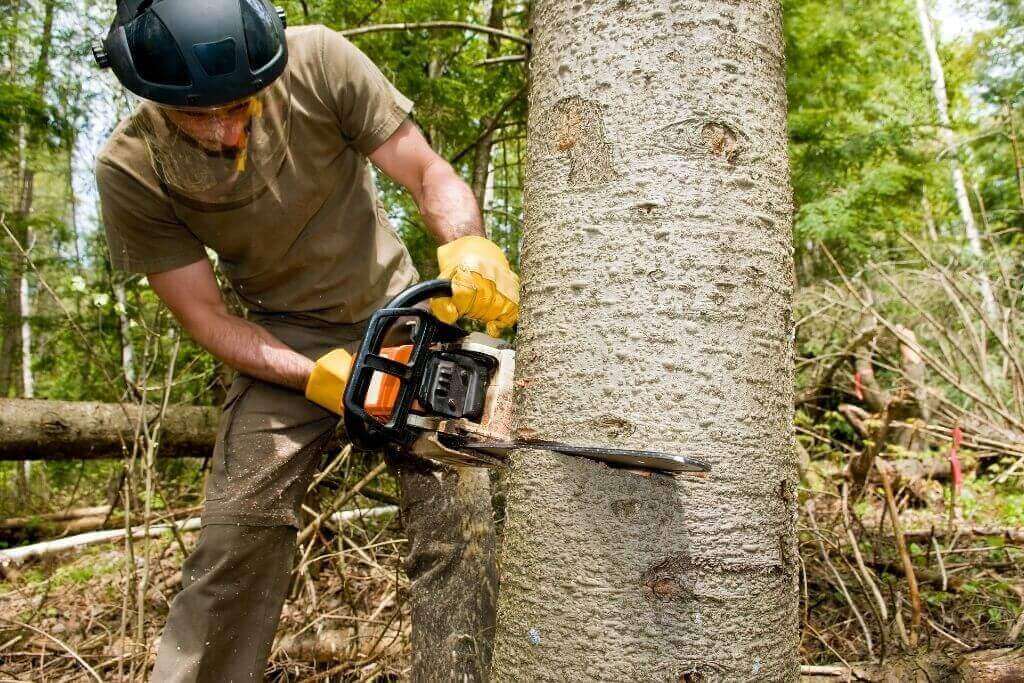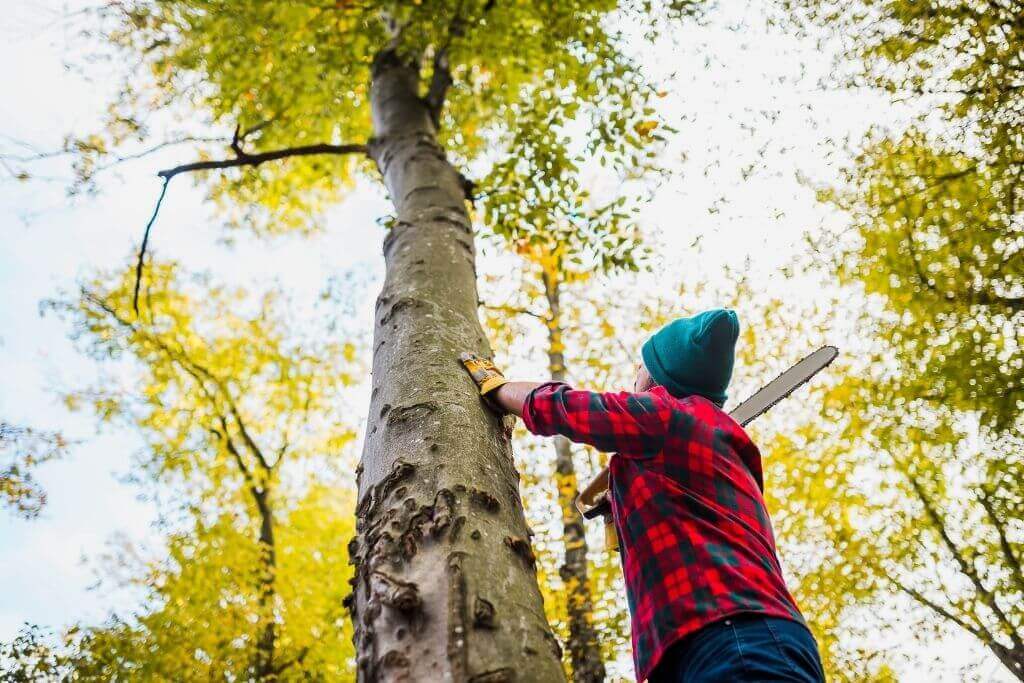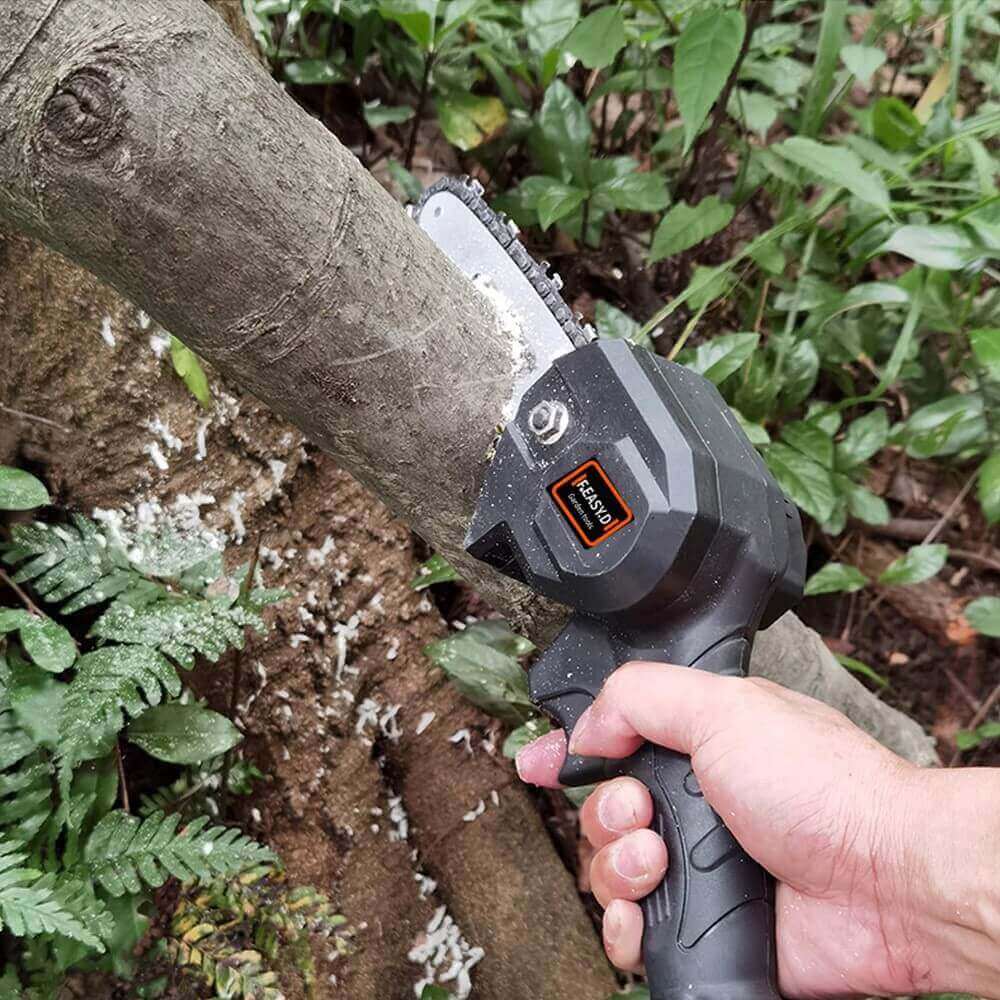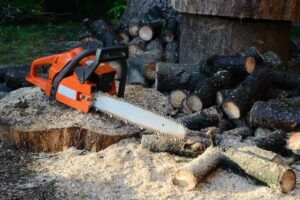
Dead, damaged, and diseased trees look bad in the backyard, and it will be impossible for you to embellish your yard while having them.
There is no doubt that a tree should be cut by professionals because a non-specialist can compromise personal safety in the process.
Experts know how to operate tools used in the tree-cutting process, and they are also aware of all the safety guidelines.
However, if you want to save your money, you can make it happen on your own by following some simple tips.
Listed below are 7 applicable tips that can help you cut down a tree without causing any personal damage.
1. Gather All The Necessary Tools
Before you start cutting a tree down, it is essential to have all the required tools and gadgets to get the job done most ingeniously.
What tools will be needed? Well, there are plenty of them, such as safety glasses, working gloves, helmets, hearing protection, wedges, gas chainsaw, or battery-powered chainsaw if you cut down small trees.
There is no way you can cut down a tree without the aforementioned tools, and without them, your personal safety will be at risk.
Along with safety tools and equipment, a trusted friend should also be there because two sets of eyes are preferred over one.
There is one more thing you need to know that a permit may be needed from the homeowners depending on the locality.
So, make yourself familiar with all the rules and regulations to avoid any inconvenience.
2. Guess The Fall
Estimating the fall is undoubtedly one of the most difficult things to measure; however, it needs to be done flawlessly to make sure you don’t get yourself hurt.
We recommend you get creative and assess a tree to get to know about uneven growth, overcrowding, or other such factors to get to know where the tree most probably falls.
Always remember one thing, if you have a tree that has one particular side heavy, it will certainly fall in that direction, no matter how hard you try to redirect the fall.
In order to get a reasonable estimate, make sure you hold the ax at the length of the arm by closing one of your eyes.
After that, walk it away from a tree until you feel the top and bottom of the tree are aligned to the bottom and top of the ax.
Now, where you are standing is a rough estimation of where the tree is going to fall.

3. Clear Escape Routes
When you cut a tree, anything can be expected, so having a second plan in such a scenario is not less than a blessing.
It’s obvious that some extra time will be needed to clear the escape route, but we suggest you spend the time to ensure you have your escape route in case there is anything uncertain to deal with.
It’s always ingenious to have two oscillate routes that don’t have any debris because those will be your direct routes to safety.
4. Cut The Branches
Cutting the branches is recommended, but not in all cases. If you are working on a tree with branches spread to a wide area, the main branches should be cut at first.
There is no way you can cut the trunk directly because doing this will not only compromise your safety, but the nearby area will also be damaged.
Once you manage to cut branches with a chainsaw, the trunk will eventually become lighter, hence easy to remove.
On top of everything, removing the trunk after cutting branches will make it easy for you to fall a tree in the desired direction.

5. Careful Planning Of The Notch Is Important
Planning the notch is something that will guarantee whether the tree will fall safely or not.
If you aren’t aware of it, let us tell you that the heavy side of a tree is where it will fall – don’t forget about it.
It is needed to cut a tree at a reasonable working height to avoid any uncertain event.
In some cases, you may feel that the stump is too big to handle, and when you expose to such a situation, remember to cut down the base of a tree later.
6. Insert The Wedge
As a professional, you need to know that at no cost should you intersect the back cut, and the notch cut, because doing this will immediately make a tree fall.
Instead, make sure you leave at least 2 inches of wood between the back cut and the notch.
After that, insert the wedge into the back cut to help yourself direct the tree in your desired direction.
Inserting the wedge is of great importance because that’s when you can adjust the fall of a tree if it leans in an incorrect direction.
7. Have A Lookout For Additional Safety
No matter how expert you are at cutting trees down, have someone watch you while cutting the tree.
The trusted assistant should stand a few feet behind you to guide you at every step and let you know when a tree starts to fall.
Vacating the area is necessary when you cut the tree, so your assistant can tap you with the help of a stick to indicate that it’s time to vacate the place.
Don’t follow your instincts, but the tap of your assistant, and the moment you feel he has given you a signal, walk away immediately.
Final Thoughts
Cutting down a tree without getting yourself hurt in the process can be a hectic task.
In this article, we hope it has made you understand the tips and tricks that are needed to keep in mind while cutting a tree safely.
However, if you do not feel confident with your skill or don’t have the right equipment. You need to hire a professional or tree removal local company.



![9 Best Pole Saws of 2023 [Ultimate Guide] 9 Best Pole Saws of 2023 [Ultimate Guide]](https://handykeen.b-cdn.net/wp-content/uploads/2021/03/best-pole-saw-300x200.jpg)


